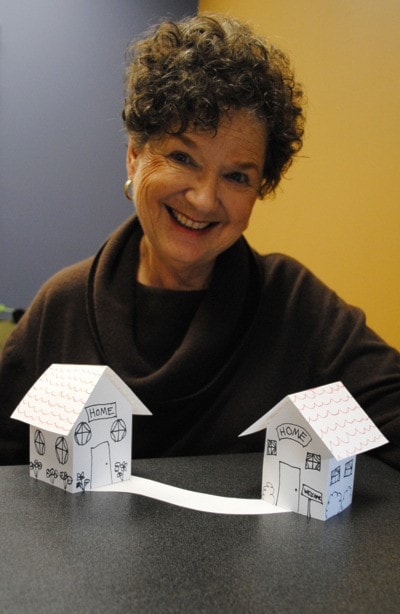Love in Victoria, Part 3: Couples choose to live apart together, as evolving structure gives new definition to the term 'committed'
In 1963, my grandmother found the love of her life. Both she and he were in their 40s, and had been separated from their spouses and families when they met and fell madly in love. They never married, never lived together, but talked every day, had regular date nights, vacationed together and kept their hearts fastened for the next 33 years until he passed away in 1996. Now, at age 91, my grandma still keeps his picture by her nightstand.
It’s not a structure that’s talked about openly, but Living Apart Together (LAT) relationships are becoming a bigger-than-ever trend in today’s dating scene. This isn’t your typical long-distance love affair — while some of these couples are forced apart due to circumstance, a growing majority of Canadian adults are choosing to stay in committed, monogamous relationships with an individual twist: they opt to live alone.
“The defining factor we see in LAT relationships is that while some people choose to live apart until marriage, these couples have no intention of co-habiting,” says Victorian Linda Breault, co-editor of a national LAT anthology project. “These people are committed and in love, but they want their independence as well.”
For the last two years, Breault and co-editor Dianne Gillespie have dedicated their lives to tracking down the stories of couples creating this shift. After putting out a request for submissions, the two were overwhelmed by the response and will publish over 30 first-person LAT accounts in their upcoming anthology Living Apart Together: A New Paradigm for Loving Couples. While there is currently no literature published on the topic, University of Victoria and University of Manitoba researchers partnered in 2011 to examine their own study of couples who wanted to be together and apart.
“The majority of our age group for this study is over 35, and we’re seeing women who want their independence, men who want their space, and people who have experienced divorce and separation who want to be much more careful with their relationships this time around,” Dr. Karen Kobayashi, assistant professor and research affiliate with UVic’s Centre on Aging, told Monday in 2011. “What we’ve found so far is that a lot of the couples are coming to us and saying, ‘Thank you, this will finally validate our lifestyle — we’re so tired of explaining our choices to our families.’”
An estimated one-in-twelve Canadians live apart together. A study in 2003 showed that nearly 57 per cent of couples in the 20 to 29 age group lived in an LAT setup, which may have explained “commuter” or long-distance relationships with both partners pursuing a career. Back then, only 11 per cent of couples over the age of 50 chose the monogamous live-apart structure. Yet, Kobayashi and Breault have now separately discovered findings that have tipped the scales dramatically. More couples — and not just the young ones — are choosing to live apart in committed, monogamous relationships than ever before.
“In our submissions, we found about 15 per cent chose to marry and maintain their separate dwellings, though many more had been married in the past but wanted the comfort and security of a relationship that also gave them space,” says Breault.
Breault experienced her own taste of LAT while doing social work overseas, where she met Gillespie. Both women were introduced to many others who had happy, committed relationships but had left their partners at home — some with no long-term plans of returning.
“So many of the women I met were living their own completely independent lives while maintaining partners and families, and other women who didn’t know about this who I told would say, ‘Wow, I would love to do that,’” Breault says. “It’s something that has been around for a long time but it hasn’t really been talked about — until now.”
Breault and Gillespie discovered four main categories in the submissions. First, voluntary LAT: those who select, wholeheartedly, to maintain both a relationship and privacy. Some examples include couples that had to “separate” to stay together, often renting apartments next to each other. Second, involuntary LAT: those separated by distance, unable to live together due to immigration or work restrictions. Third, trial LAT: couples who are met with conflicting dreams or ideals and choose to pursue them for a trial period. Fourth, miscellanea: just as love comes in many forms, Breault and Gillespie found there were some cases where LAT worked inexplicably, like the senior man who opted to move into an assisted-care facility just to be near his wife who was suffering from Alzheimer’s.
“I’m a hopeless romantic who doesn’t believe in unconditional love. I haven’t found any convincing reason why I have to live in the same house … as long as we keep dancing,” says Nanci, one of the anthology contributors, who classes herself in the volunteer LAT category.
For those who choose it, the two ladies learned there were a few main reasons that older adults, especially, weren’t so quick to shack up — fear of an unequal division of domestic labour and care giving; a desire to keep private homes for social activities with friends, adult children and grandchildren; concerns over the infringement on financial autonomy and lifestyle; stress about decisions of where to live and what possessions to keep or share. But most important of all: keeping the love alive.
“One thing was true with all the couples who spoke with us for the anthology — they didn’t take each other for granted,” says Breault. “They worked hard to keep their connection strong, and they treasured every minute they had to spend together.” M
To learn more, or to make a submission to their project before publication, contact Linda Breault at breault.gillespietba@gmail.com.
